Pictures of this page were captured in Vaucluse (France) near Sault village in the night from 19th to 20th november 2002.
Here is a view upon the observation site under the moonlight. The altitude is about 1000m and the température is nearly 0°C. Standing on the edge of a lavender field, we are observing the sky (60 sec exposure with CASIO QV 4000 difital camera)
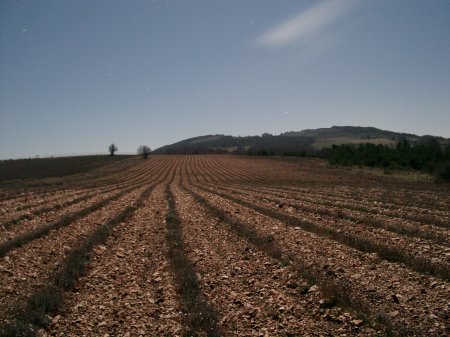 |
This leonid was captured under Ursa Major constellation at about 2H00 local time (exposure of 8 seconds taken with an EPSON PC3000Z digital camera at 400 ISO sensitivity). On the lower part, haze is reflecting moonlight.
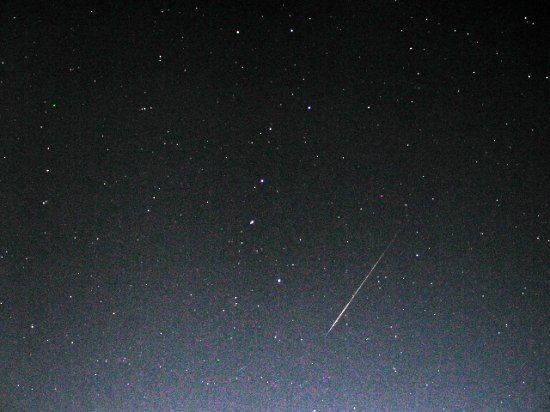 |
This picture is a combination of 4 exposures of 8 seconds taken with an EPSON PC3000Z digital camera at 400 ISO sensitivity. At least 5 Leonid streaks are visible in Orion constellation. This streaks occured during the peak of activity at about 5H00 local time. Light on the bottom right is a result of the full moon glowing in the night.
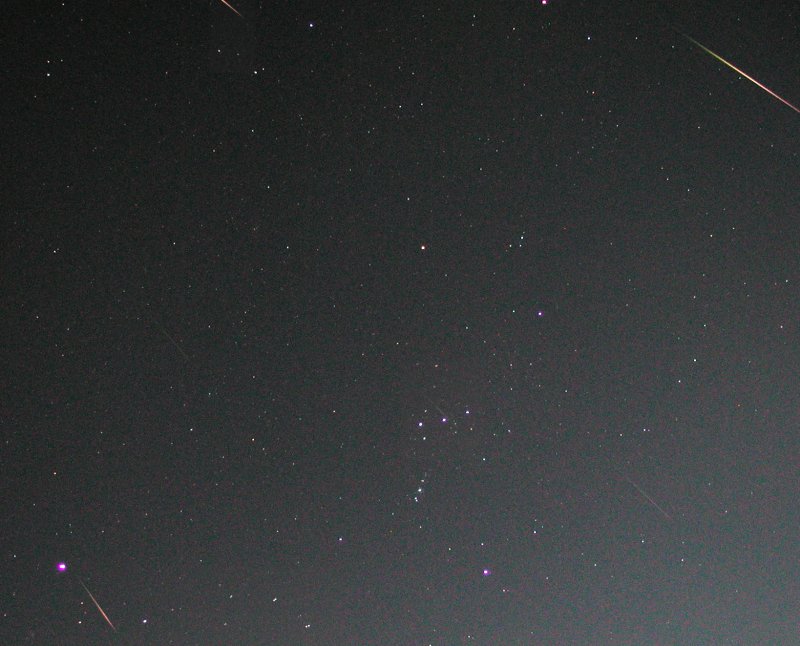 |
Picture below is a detailed view of the sreak located on top right of the previous picture. This detailed view shows the meteor colour changing from green to red along the trajectory.
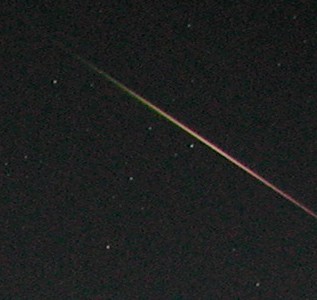 |
Here is an 8 seconds exposure captured with an EPSON PC3000Z digital camera at 400 ISO sensitivity. This picture shows a Leonid streak with smoke under Orion constellation.
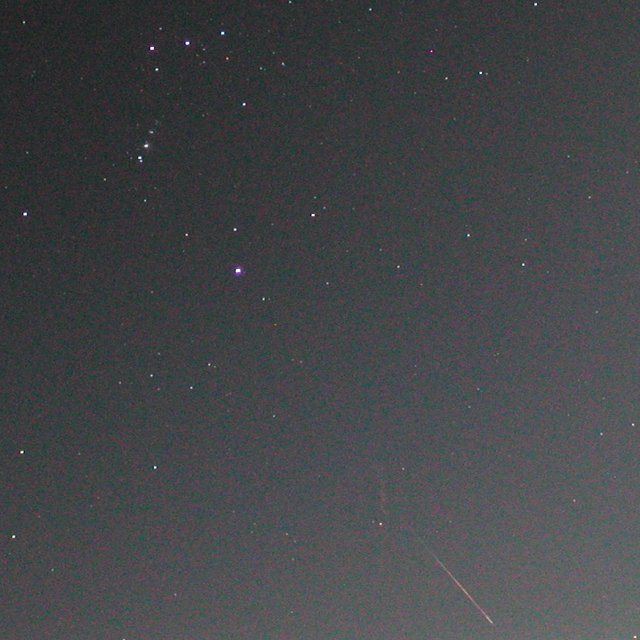 |
This array shows 20 minutes of evolution of a smoke streak caused by a very bright meteor at about 6H00 local time. Unfortunately, I was not able to capture this noticeable meteor passing in front of Canis Major constellation. These pictures are fragments of 60 seconds exposures taken with a CASIO QV4000 digital camera.
| 6H10 | 6H17 | 6H23 |
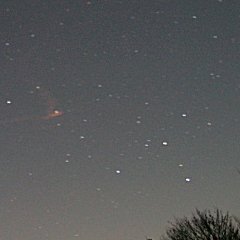 |
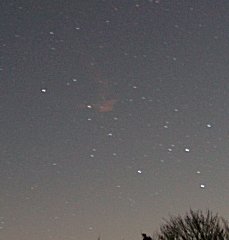 |
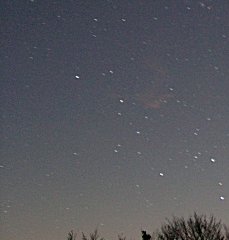 |
| 6H25 | 6H33 | |
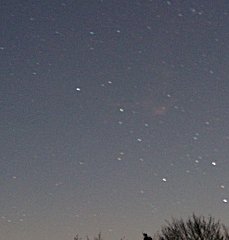 |
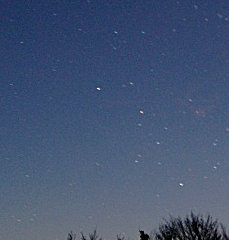 |
The 2002 Leonids night ends with the bright Venus rising ....
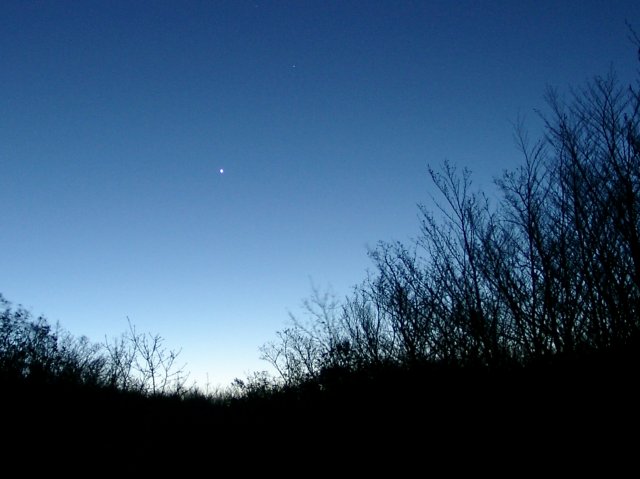 |
And then, the moon vanishing at 7H30 ....
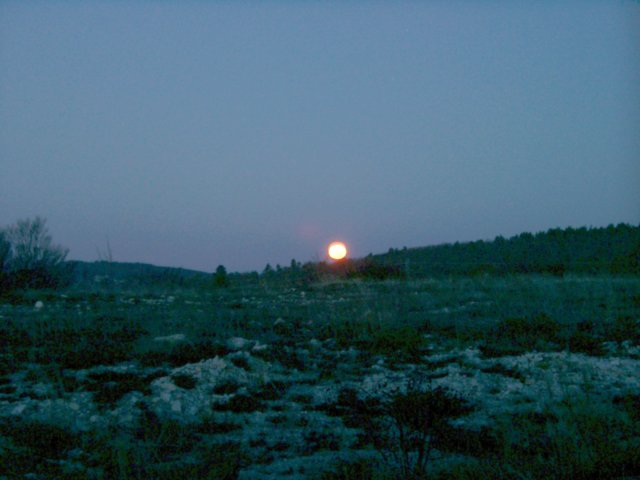 |
And finally the sun rising over the mountains of Luberon at 8H30.
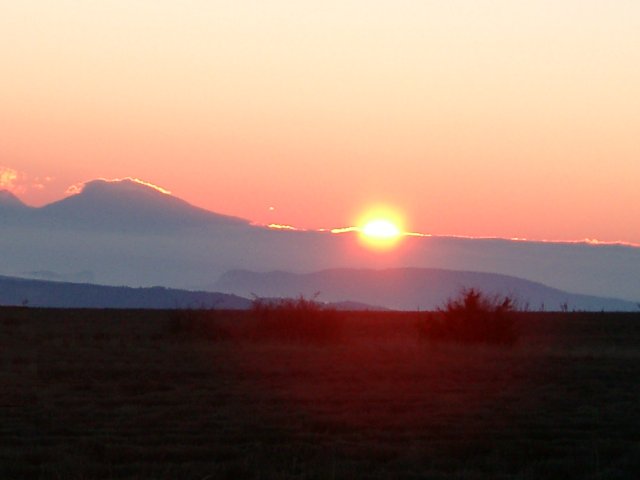 |